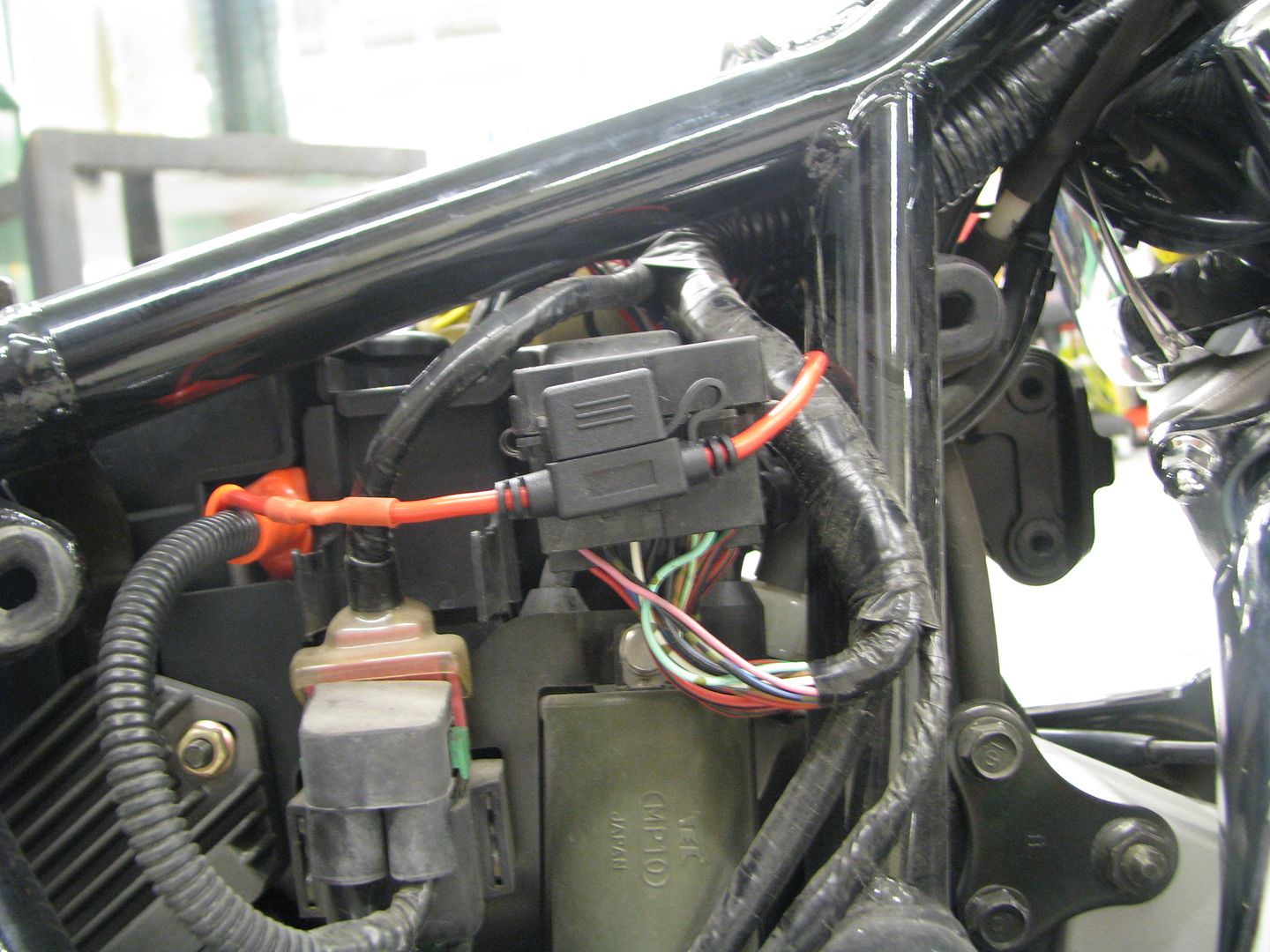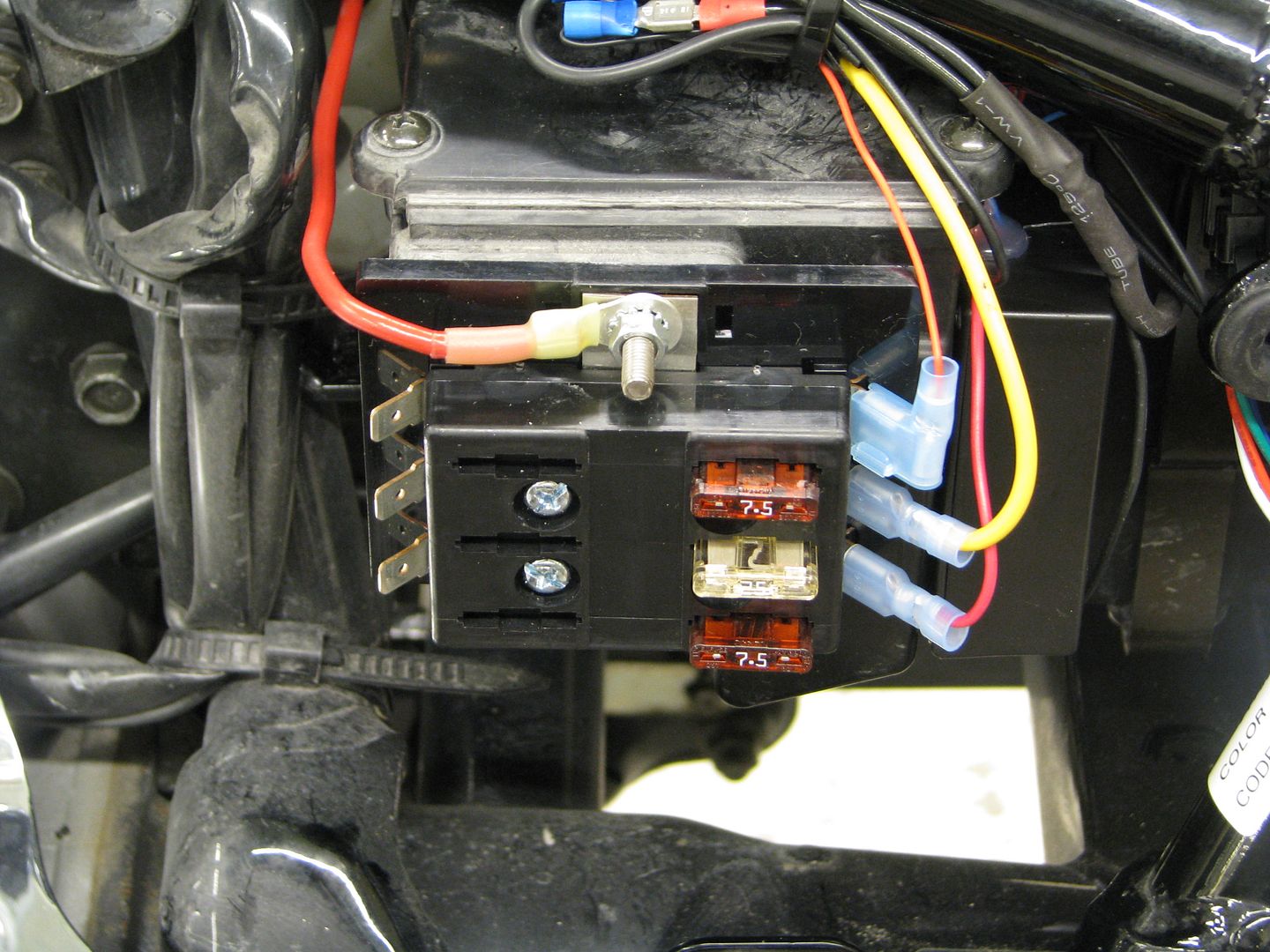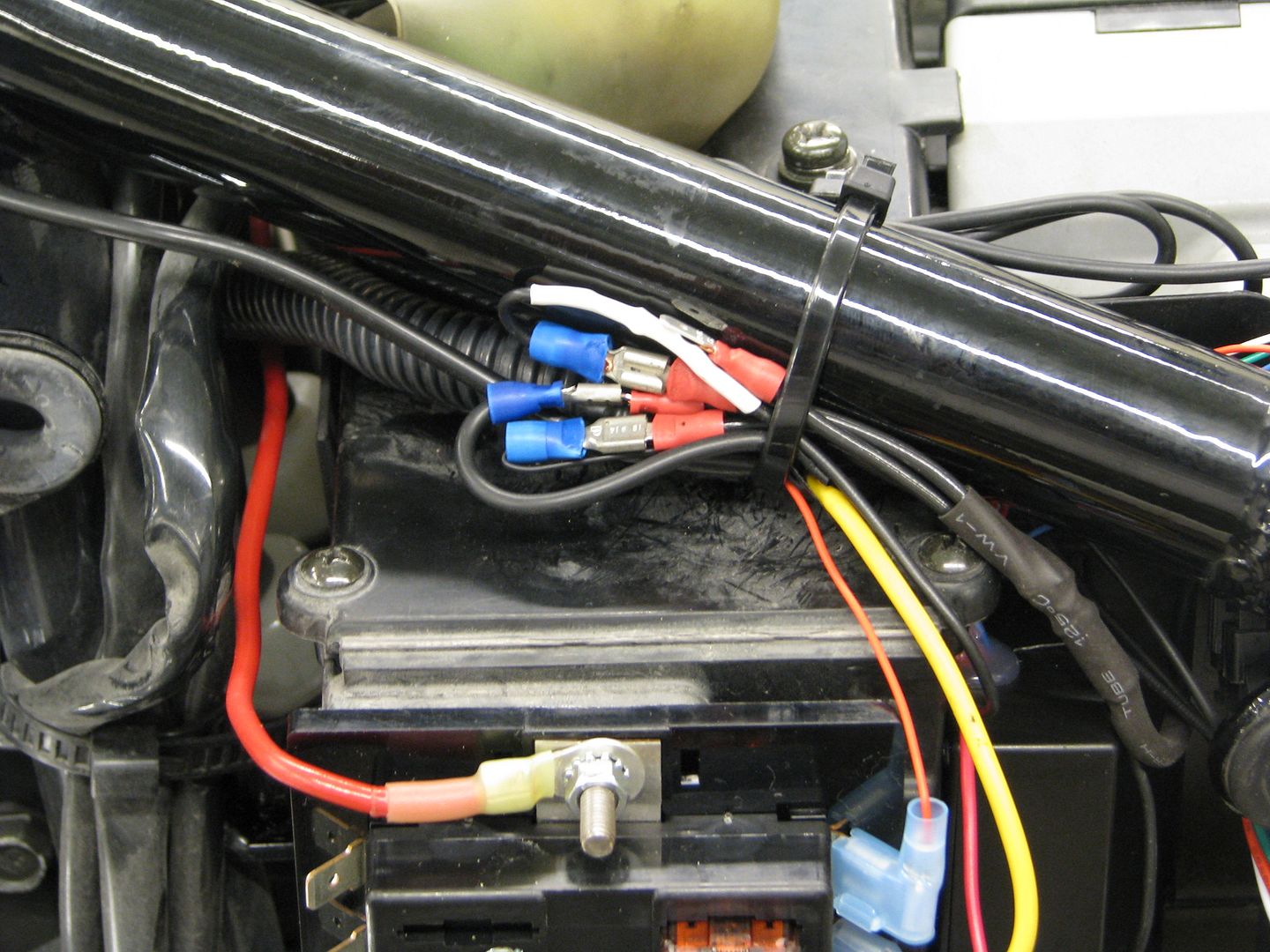Hey guys
I want to get my bike ready for night ridding and to use my gps.
I want to add in those 55w walmart driving lights, air horn and a cig lighter maybe also a hardwire gps which I've seen online instead of using the cg lighter, maybe add 2 more lights which would function as added tail lights.
I do not know about wiring relays and such. I saw this video and thought this could be something I could do.
Could one of you electrical experts explain in more detail what this guy is doing and if you think it's a good idea.
Thanks
Evan
I want to get my bike ready for night ridding and to use my gps.
I want to add in those 55w walmart driving lights, air horn and a cig lighter maybe also a hardwire gps which I've seen online instead of using the cg lighter, maybe add 2 more lights which would function as added tail lights.
I do not know about wiring relays and such. I saw this video and thought this could be something I could do.
Could one of you electrical experts explain in more detail what this guy is doing and if you think it's a good idea.
Thanks
Evan














